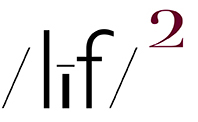(embiggenable)
(embiggenable)
(embiggenable)
(embiggenable)
(embiggenable)
“Why do most great pictures look uncontrived? Why do photographers bother with the deception, especially since it so often requires the hardest work of all? The answer is, I think, that the deception is necessary if the goal of art is to be reached: only pictures that look as if they had been easily made can convincingly suggest that beauty is commonplace.” ~ Robert Adams
I HAVE USED THE ABOVE ROBERT ADAMS QUOTE PREVIOUSLY. It presents an idea with which I totally agree -that is, only pictures that look as if they had been easily made can convincingly suggest that beauty is commonplace. That written, I also agree with the notion that most great pictures look uncontrived.
Re: deception - I am currently wrestling with the idea of whether or not to apply classic, retro, drugstore-style borders on my roadside attraction pictures. And, to be honest, there are times when I believe I should apply those borders on all of my pictures. The purpose of such an application is my idea of a pure deception. That is, I am trying to" “deceive” the viewers of my pictures that they were easily made cuz, you know, quite obviously, they are “just” snapshots.
Why do I engage in this “deception”? That’s cuz most people believe that snapshots are made quite “casually”. That is, without much thought of artistic intentions. And therein is the “hook”. The hook being that which gets a viewer of my “snapshots” to stop and consider- a heightened level of curiosty?-why these “snapshots” are hanging on a gallery wall.
WIthout any pretense of disingenuous humility, I know that I am a damn good picture maker. I also know that my pictures of the commonplace world, when displayed on gallery walls, can and do capture a viewer’s attention and interest, with or without a snapshot border. However, it is becoming increasingly important to me to emphasize the idea that beauty is commonplace. Or, to be more precise, that a beautiful, or at least interesting, object can be made from the awareful observation of the commonplace.
I will admit that I may be deceiving myself with my deceptive snapshot deceptions, I do think that that device can and often does incite in a viewer of my “snapshots” the curiosity to investigate what is going on in and with my pictures that may not be obvious at first glance.
